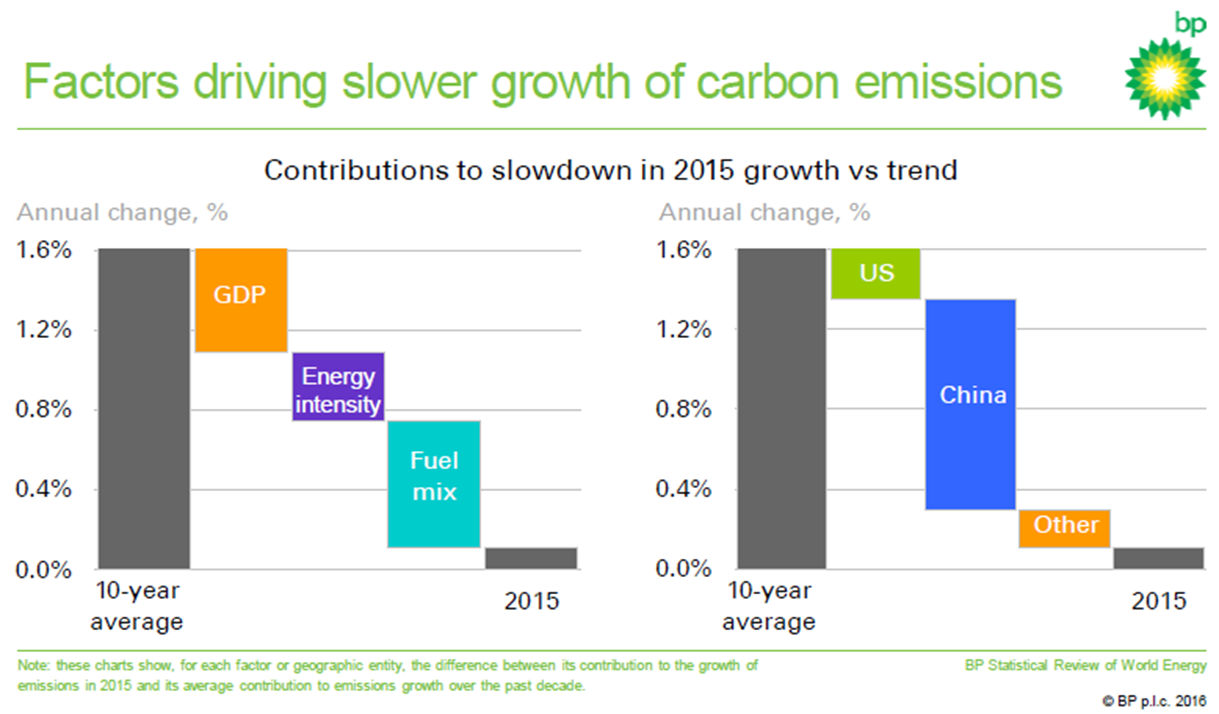The BP Statistical Review of World Energy was published last week. It contains two pieces of particularly encouraging information. First. in 2015 coal demand fell sharply. Second, carbon emissions from energy rose at the slowest rate for 25 years (other than the immediate aftermath of the financial crisis). The report is summarised by BP’s group chief economist, Spencer Dale, in this presentation.
Coal: the world’s worst energy source
Locally polluting as well as the main source of climate change emissions, coal is a really nasty fuel. But it is globally abundant and cheap so most industrialising countries (including those of Europe) built their economies on it. It’s therefore encouraging to see that in the world’s two biggest economies, the US and China, coal had a bad year in 2015. Here’s the picture for coal demand and supply.

In the US demand fell because cheap gas (arising from the shale revolution) displaced coal from power generation, so that gas is now for the first time the largest source of energy in the US for electricity production. Burning gas emits carbon too but much less than for coal.
In China, coal demand fell for a second year, mainly because of slow or negative growth in the heavy industrial sectors such as steel, where there is now rampant overcapacity. The Chinese economy is also gradually shifting away from manufacturing towards services, which are less energy intensive. There is a still a lot of future manufacturing growth to come in China and eventually steel output will probably rise again, but China is also building a huge amount of nuclear and solar electricity generation, so future coal demand may not rise much.
The main growth in demand for coal is now India, which has a long way to go before its economy has caught up with China, so its energy demand growth is likely to remain high. India is also building new nuclear and solar but is likely to consume much more coal for years to come.
Carbon emissions barely rose in 2015
The fall in coal use was a big factor in the broadly flat level of annual carbon emissions from energy (it was actually -0.1%). Here’s the picture.

You can see that the annual growth of carbon emissions has been 1.6% over the last decade, so 2015 was quite a big improvement. It was caused by a combination of lower GDP growth, a fall in energy intensity of GDP (which is a long term trend) and the sharp fall in coal’s share of the fuel mix. In terms of countries, it was China and the US which were responsible for most of that combined effect.
It’s far too soon to declare victory on climate change. Realistic forecasts still suggest rising emissions for a long time, requiring negative emissions at some point in the next few decades if we’re to have any reasonable chance of sticking to the 2 degree target the Intergovernmental Panel on Climate Change has been recommending.


Leave a Reply